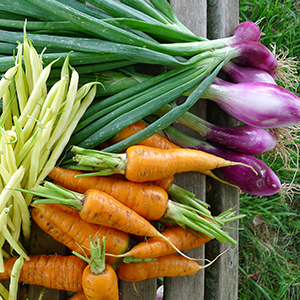
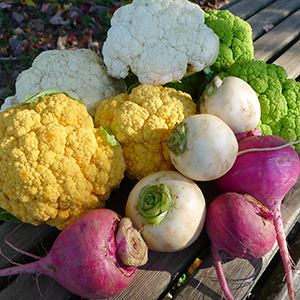
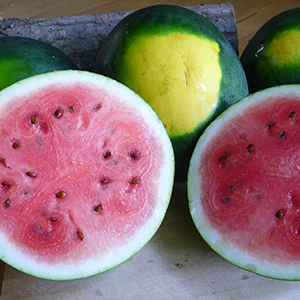
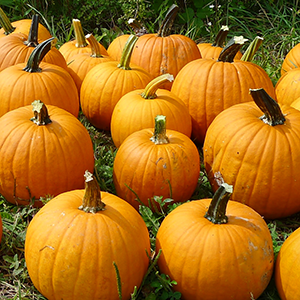
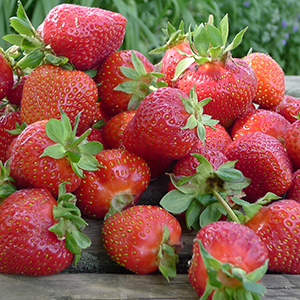
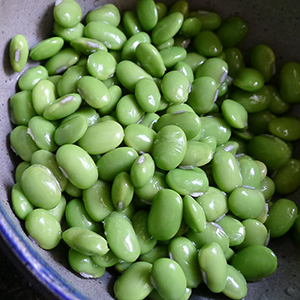



News and Notes | The Anchor Run Blog
Posts Filtered by Month - December 2020 |
Show Recent Posts
December 21, 2020
Scrumptious Solstice
by Farmer Dana
Scrumptious Solstice
by Farmer Dana
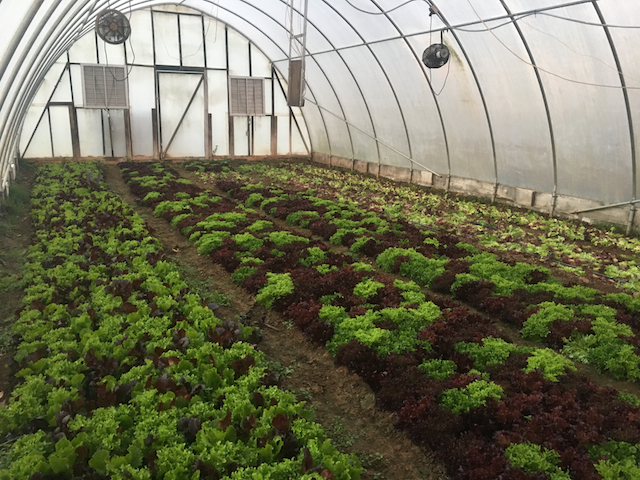
The final patch of lettuce mix, nestled in the protective greenhouse.
Late Fall Harvest #6 (Week B) should include cabbage, potatoes, beets, carrots, onions, rutabaga, radishes, lettuce mix, kale, and bok choy.
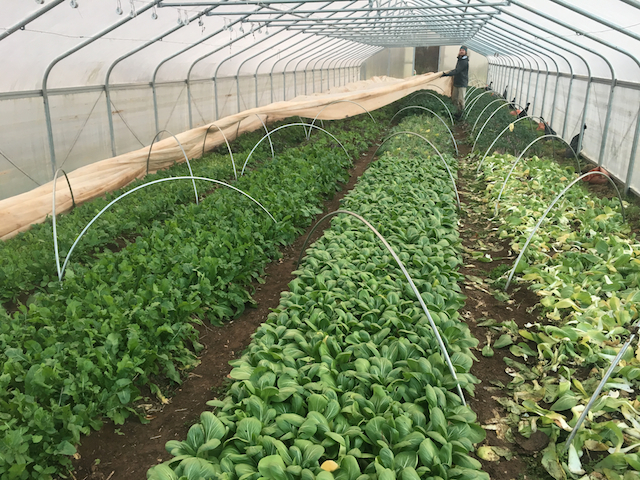
Preparing for some deep cold, covering crops in the Hoop Tunnel.

December 21, 2020
This is the End, and Happy Winter Solstice!
by Farmer Derek
This is the End, and Happy Winter Solstice!
by Farmer Derek
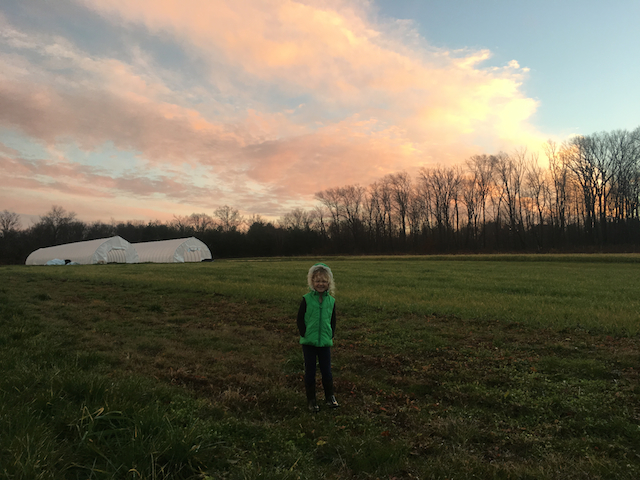
The sun sets on the 2020 growing season.
The final harvest week of Late Fall and 2020 is here! Thirty-two weeks since it all began last May, we are mostly satisfied and content with how everything has unfolded. During this weird year of upheaval and routine breaking and shaking, farm work stayed pretty normal and constant. The only major changes that were made here was with the distribution of produce but we quickly accepted fate and acclimated to this system. It did require a lot more work but it also allowed us to greet and interact with more CSA members. Plus, it was always a fun game to try to identify members in their masks. Though COVID has disrupted most of our lives, the weather this year was mostly moderate, and that was comforting, at least for me, the farmer.
Late Fall CSA has flown by, and I think overall harvests have been bountiful and tasty, with full shares receiving more than the pledged maximum goal of 12lbs each week (week #5 was 13.75lbs). Some items we missed this year, like sweet potatoes and garlic, but cabbage, beets, carrots, and others picked up the slack. We strive to mostly distribute all the greens and storage crops by the end of Late Fall (without overwhelming members too much) and it looks like we'll meet that goal. There'll be some miscellaneous storage crops left and tunnel greens should regrow later this winter, so we may hold a flash sale later on. We'll announce via e-mail if we do so. Now, however, we'll hopefully finish the majority of our winter administrative work then take a short break from working. In February we'll begin preparing for greenhouse seeding and put the finishing touches on the 2021 Farm Plan. In March we hit the ground running and by April outside growing will be in full swing. But let's please not rush it!
From all of us here at the farm we wish you a wonderful winter and holiday season, good health, many smiles, and satisfied feelings. Peace be with you!
Love,
Your Anchor Run CSA Farmers
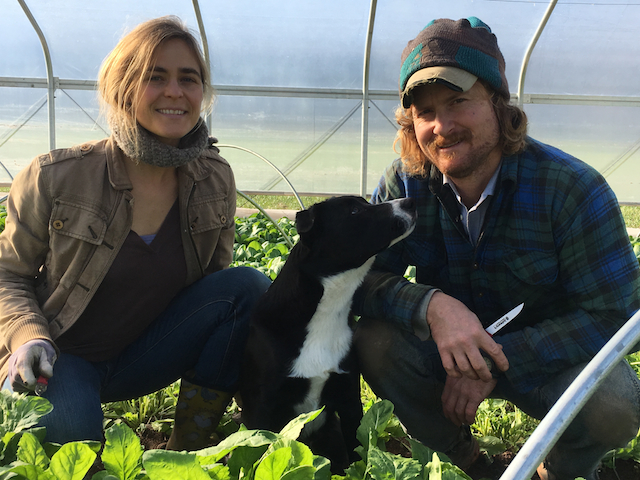
Just a close up of your farmers and their dog.

December 21, 2020
2021 Main Season Sign Up Reminder
by Farmer Derek
2021 Main Season Sign Up Reminder
by Farmer Derek
Don't forget to secure your share of the 2021 harvest! Registration is open and a $200 deposit guarantees your spot. In 2020 we had to turn potential members away due to strong demand as we reached our maximum membership, so please don't wait until the last minute to sign up. To join, follow this link.

December 14, 2020
Late Fall Deliciousness
By Linda Dansbury
Late Fall Deliciousness
By Linda Dansbury
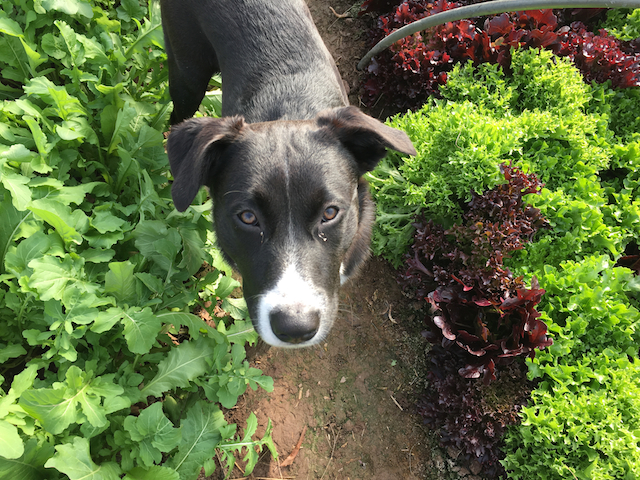
Farm dog Finch.
Winter weather is about to descend on us, but our eating has already turned to hearty and warming dishes. Here are a few things we have enjoyed with our veggies recently:
Sweet potatoes, onion, potatoes, watermelon radish, carrots, turnip, rosemary - made a large sheet tray of roasted veggies. Cooked at 375 until they were pretty tender. If you cut things to similar sizes they will all be soft at the same time. I just toss in a bit of olive oil and add salt and pepper. I always make more than we can eat because they reheat nicely and they are also delicious in frittatas. They can also be done ahead if you will need the oven for another part of your meal. I just pop them back in the oven to reheat them for a few minutes before serving.
Daikon radishes, turnips, greens, carrots, onions - one of the (many) great things about making stews is that you can pretty much add whatever you want to them. Most stews call for carrots, potatoes, celery, but I added a couple daikons and turnips as well, and then added a bunch of chopped mixed greens at the end, adding flavor, color and nutrients to the meal.
Potato, onion, kale - made a potato soup, my own version of potato-leek soup and added a lot of kale in the last 20 minutes. Instead of pureeing the soup, I just used a potato masher, so it stayed very thick and rustic.

December 14, 2020
Tuesday 1-7pm or Saturday 11am-1pm This Week!
by Farmer Dana
Tuesday 1-7pm or Saturday 11am-1pm This Week!
by Farmer Dana
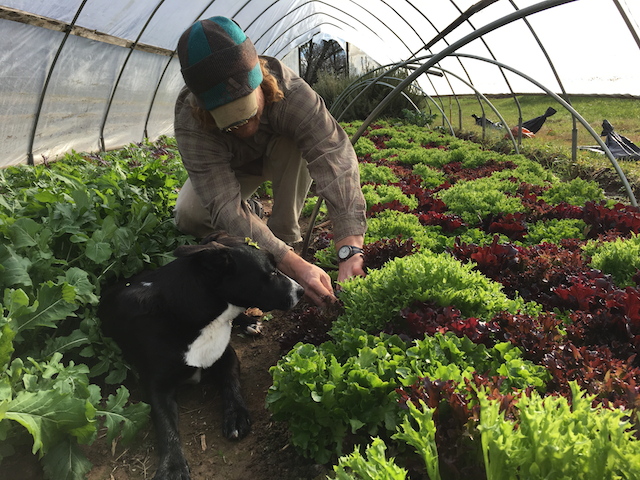
Lettuce mix and 2nd growth arugula looking great a couple weeks ago.
Late Fall Harvest #5 (Week A) should include potatoes, cabbage, onions, garlic, bok choy, kale, lettuce mix, beets, and rutabaga.

December 14, 2020
A Snow and Cold Test
by Farmer Derek
A Snow and Cold Test
by Farmer Derek
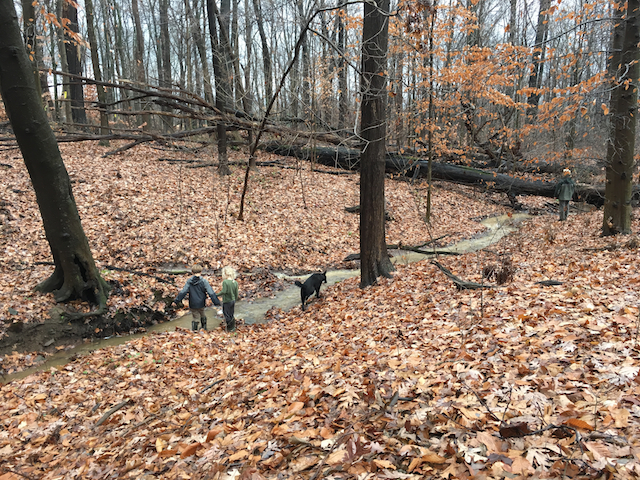
Anchor Run Farm woods adventure.
Looks like we're in for a nice midweek wallop of blustery snow followed by some serious cold. By then our crop footprint will have shrunk to two tunnels so it will be a bit easier to provide extra protection where needed. We'll probably throw on an extra sheet of our thickest row cover then wait with our fingers crossed until moderate temperatures return next week. Cold nights that follow cloudy days are the most challenging. We have the heat turned on in our greenhouse to keep temperatures just about the freezing mark so that space should be all good as long as we don't lose power. Even with the extra work/stress, I am pretty excited to see some snow once again. It is unfortunate that it coincides with a scheduled pick up (which has been rescheduled for Tuesday) and during the same week our tractor is due for its annual tune up (which has also been rescheduled).
We're blazin' through the 2021 Crop Plan and soon we'll embark on the always fun space and time puzzle that is the Crop Rotation. Our goal is to keep crops in the same family off a piece of ground for 3-5 years to break any pest and disease cycles as well as manage nutrient uptake. For some families, like nightshade/solanaceae/tomato/potato and brassica/cole/cabbage/kale/arugula it's a bit more difficult because we grow a lot of those crops, and they may only have a 3 year gap. For others, like the apiaceae/carrot/fennel or amaranth/chenopod/chard/beet, it's a bit easier because their footprint is smaller. Besides organizing our farm space with these parameters we also try to plant fields temporally so that field work and irrigation infrastructure is more efficient.
In anticipation of a major snowstorm and cold weather, yesterday Pat and I harvested all the greens needed for this week, a total of 530lbs harvested over 4 hours. That's a lot of greens. Late Fall stalwarts kale and lettuce mix plus a newcomer to this time of year for us, bok choy, were cut. Bok choy seems to be about 99% water, which makes it much heavier. We're excited to share them with you!

December 7, 2020
Cold Hardy
by Farmer Dana
Cold Hardy
by Farmer Dana
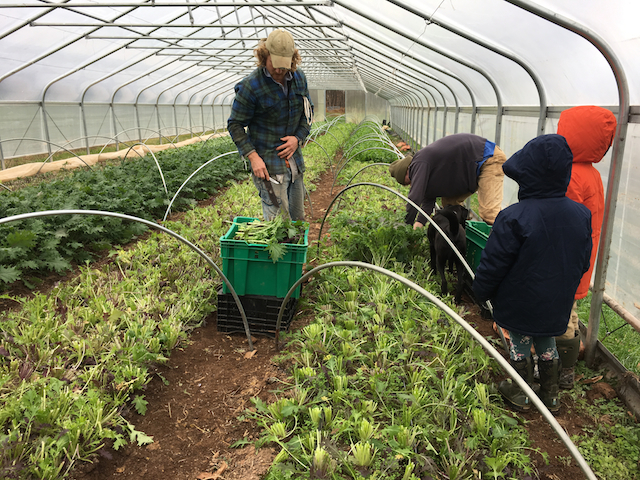
Harvesting greens mix in the Hoop Tunnel a couple weeks ago.
Late Fall Harvest #4 (Week B) should include cabbage, potatoes, kale, onions, lettuce mix, baby head lettuce, arugula, rosemary, beets, and rutabaga. We aren't 100% certain what the variety and quantity of specific greens will be until we begin harvesting midweek but each week the approximate total weight of fresh greens is 2.5 lbs for Full/Half shares and 1.75 lbs for Medium shares.

December 7, 2020
Revered Rutabaga
by Linda Dansbury
Revered Rutabaga
by Linda Dansbury
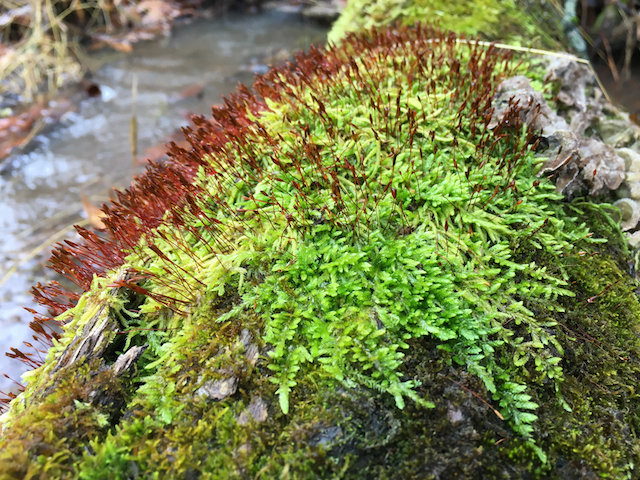
Moss (not rutabaga) found in the woods. Moss is a plant that reproduces with spores not flowers. Stalked spore capsules are seen here.
Another new root veggie will be in the pick up room this week - the little known and underappreciated rutabaga!
This sort of dumpy-looking veggie with a purple top and beige bottom, may not look very alluring, but there’s a lot more to this winter vegetable than meets the eye. Underneath its woody-looking exterior, rutabaga’s butter-yellow flesh is sweet and earthy. Rutabagas are the result of turnips crossing with wild cabbages in the 1600s, and while they contain the genes of both veggies, they’re considered a part of the cruciferous family of vegetables (cousins include broccoli) and pack similar health benefits. Just one cup of rutabaga contains approximately 50% of your daily value of vitamin C. They’re also rich in fiber, vitamin B6, potassium, and magnesium — and low in calories. An entire medium-sized rutabaga has only 145.
There are many ways to enjoy rutabaga: Mashed or roasted, either alone or in combination with other root veggies; delicious oven fries - toss in oil of your choice, salt and add herbs and spices you like and bake at about 375 for 30 min or so; slice thin and make into your favorite gratin recipe; instead of using potatoes, make rutabaga Hasselback; add to your favorite soups and stews; add to a mixed root and cabbage roast - yum!
Do you like Carrot Cake? Use rutabaga instead!
Anyway, make sure you add this little known veggie to your winter repertoire!

December 7, 2020
Open/Close
by Farmer Derek
Open/Close
by Farmer Derek
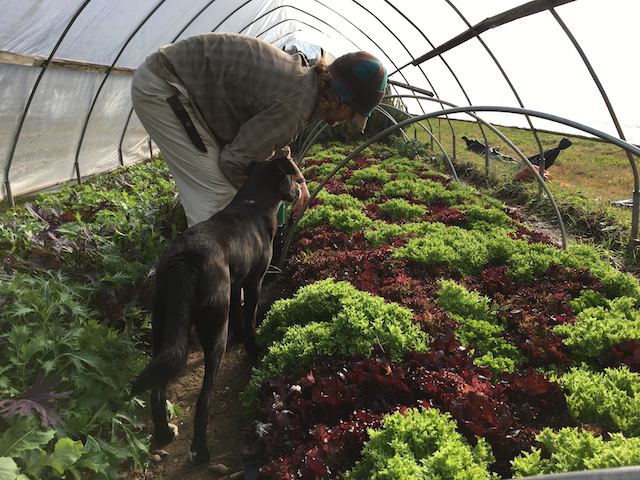
Harvesting lettuce mix in the Hoop House.
Some authentic December weather has arrived. I think I'll enjoy these brisk sunny days and cold clear nights. Thunderstorms and excessive rainfall at the end of November definitely had me yearning for this. With nights descending into the low and mid 20s it means I need to recover the crops in the tunnels with the interior covers to give them an added air pocket buffer. I'll leave the covers on during the day but will at least open the endwall doors of the tunnels for air flow and ventilation and to keep the daytime temperatures from climbing too high. Once lows stay 30 and above I'll remove the covers until the next cold spell.
With the conclusion of November I can now officially tally the rainfall received during the outdoor growing season (March-November). We've been measuring rainfall during that timeframe since 2009. Overall 2020 was our 4th wettest season. It rained 41", 3.5" inches above the 12-year average. The wettest months were July (6.1") and August (6.5"). There were only two months (May, June) with less than 4". Compared to other seasons, it's apparent that we didn't endure any extreme rainfall events or months. There were no 3"+ deluges and only a few times did we receive more than 2". I think this year we were lucky because the trend had been more frequent extreme rainfall events. I'm definitely thankful for the moisture pattern this year. Because of the consistent adequate moisture I didn't have to irrigate any bare ground crops. This season our extreme weather was more temperature related.
The crop plan is well underway. All seeds and plants have been ordered. A few things we're excited about: a new patch of blackberries in a new field will be established; we're going to try to grow rhubarb again; new tomato varieties bred for tunnel production with great heirloom flavors and disease resistance; a production increase in sweet peppers, shishito peppers, butternut squash, and other favorites; a new celery variety that's hopefully more tolerant to leaf curl; utilizing tunnels for early and robust crops in the spring; and much more!

POSTS BY TYPE
POSTS BY MONTH

